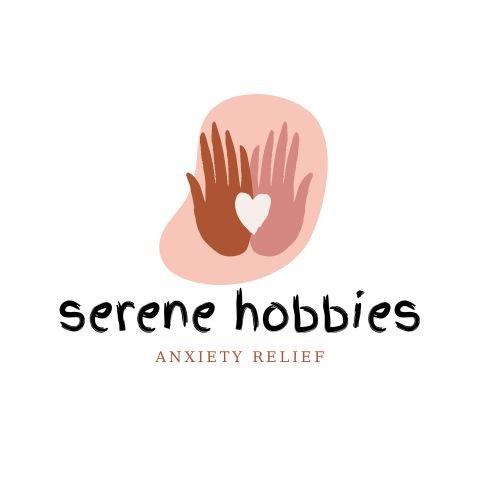Humming specific frequencies can markedly reduce your stress levels through natural vibrations. The most effective frequencies range from 432 Hz ("Verdi's A") to 528 Hz (the "love frequency"), with each offering unique calming benefits. You'll find relief by starting with your natural humming frequency, which typically falls between 100-150 Hz for men and 200-300 Hz for women. Deep humming at these frequencies stimulates your vagus nerve, releases nitric oxide, and activates your body's relaxation response. Practicing for just 5-10 minutes, especially during morning hours, can enhance your well-being and transform your daily stress management routine. The science behind these healing frequencies reveals even more powerful ways to find your inner calm.
The Science Behind Humming

Beneath the surface of simple humming lies a powerful physiological response that affects both your nervous system and brain chemistry. When you hum, you're creating vibrations that stimulate your vagus nerve, an essential pathway connecting your brain to major organs. These vibrations trigger the release of nitric oxide in your nasal passages, which helps dilate blood vessels and improve circulation.
Your humming frequency matters considerably. Lower frequencies between 50-150 Hz can activate your parasympathetic nervous system, promoting relaxation and reducing stress hormones like cortisol. When you hum at around 125-150 Hz, you're matching the natural resonance frequency of your vocal cords, which can help regulate breathing patterns and heart rate variability.
The act of humming also increases your body's production of serotonin and oxytocin, neurotransmitters associated with well-being and stress reduction.
Additionally, the controlled breathing required for humming naturally slows your respiratory rate to about six breaths per minute, a rhythm that's proven to activate your body's relaxation response. This combination of physiological effects makes humming a simple yet effective stress-management technique you can use anywhere.
Finding Your Natural Frequency
Everyone has a unique humming frequency that feels most natural and comfortable to produce. Your natural frequency typically aligns with your speaking voice's fundamental pitch, which you'll discover through simple experimentation.
To find your natural frequency, start by taking a deep breath and releasing a relaxed "hmm" sound. Don't force it – let the tone emerge naturally. You'll notice that certain pitches feel easier to sustain and create a pleasant resonance in your chest or head. That's your sweet spot.
Try sliding your pitch up and down slowly until you find the most comfortable zone. You can verify your natural frequency using a tuner app on your smartphone. Most people's natural humming frequencies fall between 100-300 Hz, with men typically ranging from 100-150 Hz and women from 200-300 Hz.
Don't worry about hitting a specific note – focus on what feels right for you. Once you've identified your natural frequency, practice humming at this pitch for 2-3 minutes. You'll likely notice that this frequency produces the strongest vibrations in your body and helps you maintain a steady, sustainable hum.
Calming Tones for Beginners

Now that you've found your natural humming frequency, you can explore specific tones proven to reduce stress and anxiety. The most accessible calming frequencies for beginners fall between 432 Hz and 528 Hz, which align closely with nature's vibrational patterns.
When you're first starting out, it's best to focus on sustained, gentle tones rather than complex melodic patterns.
Start with these fundamental frequencies to experience their unique calming effects:
- 432 Hz – Known as "Verdi's A," this frequency resonates with your heart chakra and helps reduce muscle tension while promoting physical relaxation.
- 496 Hz – Called the "miracle tone," it helps clear negative energy and promotes a sense of mental clarity during stressful situations.
- 528 Hz – Often referred to as the "love frequency," this tone aids in reducing anxiety and creating a deep sense of peace.
You can practice these tones for 5-10 minutes at a time, focusing on steady, controlled breathing while you hum.
If you're struggling to match these exact frequencies, don't worry – staying within 10-15 Hz of these numbers will still provide beneficial effects.
Deep Humming Techniques
The power of deep humming comes from engaging your entire respiratory system. When you hum deeply, you'll activate your vagus nerve, which helps regulate your body's stress response. Start by finding a comfortable seated position and relaxing your shoulders and jaw.
To perform deep humming effectively, inhale slowly through your nose for a count of four. As you exhale, create a sustained "hmm" sound, letting the vibration resonate in your chest, throat, and nasal cavities. You'll feel the strongest vibrations when you maintain a low pitch, around 130-140 Hz. This frequency range correlates with increased alpha brain wave activity, promoting relaxation.
Practice these specific techniques:
First, try the "bee breath" (brahmari), where you close your eyes and hum like a bee.
Next, experiment with the "om" resonance, starting with "ahh" and shifting to "mmm."
Finally, explore skull-buzzing hums by focusing the vibration in your facial bones and sinuses.
Aim to sustain each hum for 10-15 seconds, and don't strain your voice. If you feel lightheaded, return to normal breathing.
Perform these exercises for 5-10 minutes daily for ideal stress-reducing benefits.
Morning Humming Rituals

Start your day with invigorating humming vibrations by focusing on low, resonant frequencies for 5-10 minutes immediately after waking.
You'll find that syncing your morning hum practice with the sunrise creates a natural rhythm that energizes your body and mind for the day ahead.
Setting aside this sacred time for humming meditation helps establish a positive daily frequency that can carry you through life's challenges with greater resilience.
Daily Start-Up Vibrations
Beginning your day with gentle humming vibrations can activate your body's natural energy centers and set a peaceful tone for the hours ahead.
You'll find that specific frequencies, when hummed consistently each morning, help align your mind-body connection and reduce cortisol levels before facing daily challenges.
To maximize the benefits of your morning humming practice, focus on these fundamental frequencies:
- 432 Hz – This frequency resonates with your heart chakra, helping you start your day from a place of balance and harmony while reducing anxiety.
- 528 Hz – Known as the "love frequency," it repairs DNA and promotes cellular healing, making it ideal for morning rejuvenation.
- 396 Hz – This grounding frequency liberates you from fear and guilt, clearing negative energy blocks before your day begins.
Start with five minutes of humming at each frequency, allowing the vibrations to flow through your body.
You'll notice improved mental clarity, reduced muscle tension, and enhanced emotional stability.
Remember to maintain steady breathing and a comfortable sitting position while practicing these morning vibrations.
Sunrise Sound Activation
Consistently incorporating sunrise sound activation into your morning ritual amplifies the natural healing rhythms of daybreak. As the sun rises, you'll want to begin with a low-frequency hum of 432 Hz, matching the Earth's natural vibrational frequency. This foundational tone helps ground your energy and align your body's systems with the dawn's emerging light.
You can progress to 528 Hz, known as the "miracle frequency," as daylight intensifies. This vibration coincides with the sun's warming rays and promotes cellular healing. Hold each note for 3-5 breath cycles, allowing the resonance to flow through your chest and head. You'll notice your sinuses clearing and mental fog lifting as you continue this practice.
For maximum benefit, conclude your morning sound ritual with the 639 Hz frequency, which enhances communication and interpersonal connections. Time this final tone with the sun's full emergence above the horizon.
You'll find this practice particularly effective when performed facing east, where you can absorb both the sun's energy and your own vocal vibrations. This synchronized approach primes your nervous system for the day ahead while reducing cortisol levels naturally.
Sacred Hum Time
Sacred morning humming rituals work in accordance with your body's natural circadian rhythms to deepen the therapeutic effects of sound healing. When you hum during the early hours, specifically between 5 AM and 7 AM, you'll tap into the earth's natural Schumann resonance, which operates at 7.83 Hz. This alignment enhances your body's ability to release stress hormones and activate your parasympathetic nervous system.
You'll achieve ideal results by practicing sacred humming in a quiet space, preferably facing east, where the sun's first rays can complement your sound therapy. Start with deep breaths and maintain a consistent tone for 5-7 minutes. The most effective frequencies for morning humming range between 110 Hz and 432 Hz.
The three primary benefits of sacred morning humming include:
- Stimulation of vagal tone, which reduces anxiety and improves heart rate variability
- Enhancement of nitric oxide production, leading to better blood flow and oxygenation
- Synchronization of brain waves to alpha state (8-12 Hz), promoting mental clarity and emotional balance
Incorporate this practice daily, and you'll notice significant improvements in your stress levels within two weeks.
Resonant Frequencies for Meditation
Several resonant frequencies have proven especially effective for meditation practices, with research showing frequencies between 432 Hz and 528 Hz to be particularly beneficial.
When you're looking to reduce stress through meditation, you'll find that 432 Hz connects deeply with your body's natural rhythms, helping to slow your heart rate and calm your nervous system. The 528 Hz frequency, often called the "love frequency," can help you achieve a deeper state of relaxation and mental clarity.
You'll want to experiment with other powerful frequencies too. The 396 Hz tone helps release fear and guilt, while 417 Hz facilitates positive change and transformation.
For deep meditation, try 639 Hz to enhance connection and relationships, or 741 Hz for spiritual awakening. You can access these frequencies through specialized meditation music, tuning forks, or by using singing bowls calibrated to specific tones.
To get the most benefit, you should maintain a consistent practice with your chosen frequency. Start with short five-minute sessions and gradually increase duration as you become more comfortable with the vibrations and their effects on your consciousness.
Ancient Humming Traditions

Throughout history, you'll find ancient civilizations using sacred humming practices, from the resonant throat singing of Tibetan monks to the intricate mantra patterns echoed in temples across Asia.
You can trace these sound-based traditions to specific purposes – Tibetan throat singers developed their techniques to achieve higher states of consciousness, while practitioners of sacred mantras used precise vocal patterns to align with universal energies.
Aboriginal cultures incorporated dreamtime humming into their ceremonies, believing specific tones could connect them to ancestral wisdom and the spirit world.
Tibetan Throat Singing Origins
Dating back over 1,000 years, Tibetan throat singing emerged from Buddhist monasteries nestled high in the Himalayas. You'll find this unique practice, known as "overtone singing," produces multiple pitches simultaneously through specialized vocal techniques.
Buddhist monks developed this art form as a spiritual tool for meditation and enlightenment, believing specific frequencies could alter consciousness and promote healing.
When you explore Tibetan throat singing's core principles, you'll discover three fundamental aspects that define its therapeutic nature:
- Low-frequency overtones (between 100-150 Hz) stimulate alpha brain waves, promoting deep relaxation and stress reduction.
- Mid-range frequencies (200-400 Hz) help balance the nervous system and enhance mindfulness.
- Higher harmonics (500-1000 Hz) activate the crown chakra, facilitating spiritual connection.
Today, you can learn these ancient techniques through modern adaptations. The practice involves positioning your tongue against the roof of your mouth while constricting your throat slightly to create resonant chambers.
You'll notice that as you master the basics, your ability to produce multiple harmonics improves, offering a powerful tool for managing daily stress and anxiety.
Sacred Mantra Sound Patterns
From the sacred halls of ancient temples to modern meditation spaces, mantra sound patterns have served as powerful vibrational tools for spiritual transformation. You'll find these patterns in Sanskrit chants like "Om," which vibrates at 432 Hz, a frequency that's believed to align with the natural universe.
Ancient practitioners discovered that specific syllable combinations create resonant frequencies that can alter your consciousness and reduce stress.
When you're practicing sacred mantras, you'll want to focus on key sound patterns like "Om Mani Padme Hum" (417 Hz) or "Sat Nam" (396 Hz). These mantras don't just calm your mind – they actually change your brainwave patterns. You can enhance their effectiveness by maintaining consistent breath control and proper posture while chanting.
Research shows that these sacred frequencies can trigger your body's relaxation response. The vibrations you create while chanting mantras stimulate your vagus nerve, which helps regulate your stress levels.
Aboriginal Dreamtime Humming Practices
Humming deep within the Australian Outback, Aboriginal elders have passed down powerful sonic traditions that connect them to the Dreamtime – their spiritual dimension of reality.
You'll find that these ancient practices use specific tonal patterns and frequencies that help reduce anxiety while fostering a deeper connection to the land and ancestral wisdom.
When you practice Aboriginal humming techniques, you're tapping into frequencies that have been proven to alter brainwave patterns and induce meditative states. These vibrations, typically ranging between 110-432 Hz, mirror the natural resonance of the Earth and help you align with the environment around you.
The traditional Dreamtime humming practice focuses on three key elements:
- Sustained low-frequency tones (110-220 Hz) that ground you to the Earth's natural vibration
- Rhythmic patterns that sync with your heartbeat, usually at 432 Hz
- Circular breathing techniques that maintain continuous sound waves for extended periods
You can incorporate these practices into your daily routine by finding a quiet space, sitting cross-legged, and starting with five-minute sessions of sustained humming at these frequencies.
Benefits of 432 Hz
Regularly touted as a healing frequency, 432 Hz produces natural vibrations that can help reduce anxiety and promote relaxation. When you hum or listen to music tuned to 432 Hz, you'll notice its resonance aligns with the natural frequency of the universe, as it's mathematically consistent with the patterns found in nature, including the spirals of DNA and the movement of planets.
You'll experience several benefits when incorporating 432 Hz into your daily routine. This frequency can lower your blood pressure, slow your heart rate, and reduce muscle tension. It's particularly effective at calming your nervous system, helping you achieve a meditative state more easily.
You'll find that 432 Hz music often feels warmer and more pleasant to your ears compared to standard 440 Hz tuning.
To harness these benefits, you can either hum at this frequency using a tuning app as your guide or listen to specially tuned music. Many practitioners recommend starting with just 10 minutes daily, preferably in a quiet space where you can fully absorb the frequency's effects.
You'll likely notice improved sleep quality and decreased stress levels within a few consistent sessions.
Breathing and Sound Synchronization

Synchronizing your breathing with healing frequencies can amplify their calming effects on your nervous system.
You'll want to match your inhales and exhales to the rhythm of the sound you're listening to, creating a harmonious flow between breath and frequency.
Whether you're humming along or simply listening, try to establish a steady breathing pattern of 4-7 counts per inhale and exhale to maximize the stress-reducing benefits.
Tune Your Breath Pattern
The powerful combination of breath and sound kicks off the foundation for effective stress-relief humming. Your breath pattern serves as the rhythmic backbone that guides your humming frequency and helps regulate your nervous system.
When you sync your breath with specific humming tones, you'll create a resonance that amplifies the calming effects throughout your body.
To optimize your breath pattern for stress-relief humming, focus on these key elements:
- Establish a 4-4-4 breathing rhythm: Inhale for 4 counts through your nose, hold for 4 counts, and exhale with a hum for 4 counts. This pattern activates your parasympathetic nervous system.
- Match your humming pitch to your natural speaking voice: You'll feel the vibration more strongly in your chest and throat when you find your resonant frequency.
- Maintain consistent airflow: Keep your exhale steady and controlled throughout the entire humming duration to maximize the vibrational benefits.
As you practice, you'll notice how your breath naturally finds its rhythm with the humming frequency.
This synchronization creates a self-reinforcing cycle that deepens your relaxation response and reduces stress levels effectively.
Match Sounds With Breathing
Building on your established breath pattern, matching specific sounds to your breathing creates a powerful harmonious effect. You'll want to synchronize a low-pitched humming sound with your exhale, maintaining a steady frequency between 432-440 Hz. This range naturally aligns with your body's resonant frequencies and promotes relaxation.
As you inhale through your nose, remain silent and focus on the sensation of air filling your lungs. When you exhale, produce a gentle "hmm" sound, letting your lips remain closed and allowing the vibration to resonate in your chest and head. You can experiment with slightly different pitches to find what feels most comfortable and calming for you.
If you're struggling to find the right pitch, try humming along with a tuning fork or a tone generator app set to 432 Hz. Keep your jaw relaxed and let the sound flow naturally without forcing it.
As you continue this practice, you'll notice how the combination of controlled breathing and sustained humming helps reduce muscle tension and mental chatter, leading to a deeper state of relaxation.
Humming With Nature Sounds
Nature's calming sounds provide an ideal foundation for therapeutic humming practice. When you combine your humming with specific nature recordings, you'll create a powerful stress-relief experience that engages multiple sensory pathways. Ocean waves, flowing streams, and gentle rain patterns naturally align with breathing rhythms, making them perfect accompaniments for mindful humming exercises.
You can enhance your humming practice by selecting nature sounds that match your desired emotional state:
- Ocean waves (8-12 Hz) – Match your hum to the rhythmic pattern of waves breaking on shore, which aligns with alpha brain waves and promotes relaxation.
- Forest birdsong (2-4 kHz) – Harmonize your humming with morning bird calls to boost alertness and positive energy.
- Rainfall (4-6 Hz) – Sync your hum with steady rain patterns to achieve theta brainwave states and deep meditation.
Try recording your preferred nature sounds or use high-quality audio tracks available through meditation apps. Start with five-minute sessions and gradually increase duration as you become more comfortable with the practice.
You'll notice improved focus and reduced stress levels when you consistently pair your humming with these natural frequencies.
Creating Your Sound Sanctuary

Setting up a dedicated space for your sound healing practice transforms an ordinary room into a personal sanctuary for stress relief. You'll want to choose a quiet corner where you won't be disturbed and can fully immerse yourself in the therapeutic frequencies.
| Time of Day | Frequency (Hz) | Purpose |
|---|---|---|
| Morning | 432 | Awakening |
| Mid-Morning | 528 | Transformation |
| Afternoon | 396 | Grounding |
| Evening | 639 | Connection |
| Night | 285 | Relaxation |
Start by clearing the space of clutter and adding comfort elements like cushions or a meditation chair. You'll need a quality speaker system or headphones that can accurately reproduce your chosen frequencies. Consider adding nature-inspired elements such as crystals, plants, or a small water fountain to enhance the peaceful atmosphere.
Position your sound equipment to create an ideal acoustic environment. If you're using multiple speakers, arrange them in a triangle formation with you at the center. Don't forget to keep your humming tools – tuning forks, singing bowls, or digital frequency generators – within easy reach. Dim lighting or candlelight can help signal your brain it's time to unwind and engage with healing frequencies.
Daily Humming Practice Tips
A successful humming practice depends on consistency and proper technique. You'll want to set aside 5-10 minutes each day, ideally during quiet moments when you won't be disturbed.
Start by finding a comfortable position, either sitting or lying down, and take several deep breaths to center yourself.
When you're ready to begin humming, focus on maintaining a steady, gentle tone that feels natural to you. Keep your jaw relaxed and slightly open, allowing the vibrations to resonate throughout your facial bones and skull.
You'll notice different frequencies create distinct sensations in various parts of your head and chest.
Here are three essential frequencies to incorporate into your daily practice:
- 432 Hz – Known as the "natural frequency," it helps restore inner balance
- 528 Hz – Called the "love frequency," it promotes healing and stress reduction
- 396 Hz – This frequency aids in grounding and releasing fear-based emotions
Remember to stay hydrated before and after your practice, as humming can dry out your throat.
If you experience any throat strain or discomfort, adjust your volume and duration accordingly.
Frequently Asked Questions
Can Humming at Specific Frequencies Help With Chronic Pain Management?
You can use humming frequencies between 40-100 Hz to help manage chronic pain. These vibrations may stimulate your vagus nerve, release endorphins, and reduce inflammation, though you'll need consistent practice for best results.
Are There Any Negative Side Effects to Daily Humming Practice?
You won't experience major side effects from daily humming, but you might notice throat irritation or hoarseness if you overdo it. Remember to stay hydrated and take breaks if your throat feels strained.
How Do Electronics and Wifi Signals Affect Humming Meditation Frequencies?
You'll experience minimal interference from electronics and WiFi during humming meditation. While these signals operate at different frequencies than your humming, it's best to practice away from electronic devices for best results.
Should Children Practice Frequency-Based Humming Techniques?
You'll want to introduce children to gentle humming gradually, starting around age 5. Keep sessions brief and supervised. It's best to consult their pediatrician first, especially if they've got respiratory issues.
Can Humming Therapy Interfere With Prescription Medications or Medical Treatments?
You should consult your healthcare provider before starting humming therapy. While it's generally safe, vibrations could affect certain medical conditions or interact with treatments, especially those involving your throat or respiratory system.
In Summary
You'll find that incorporating specific humming frequencies between 40-128 Hz into your daily routine can considerably reduce your stress levels. Start with gentle morning hums at 40 Hz, and gradually work your way up to deeper tones. Remember, you're unique, so experiment with different frequencies until you discover what resonates best with your body. Consistent practice, even for just five minutes daily, will help you master this natural stress-relief technique.





Leave a Reply